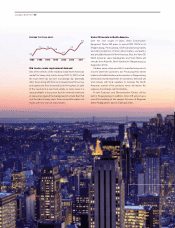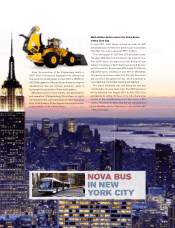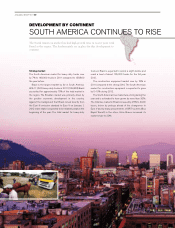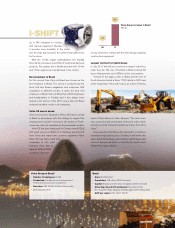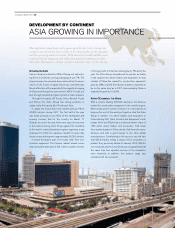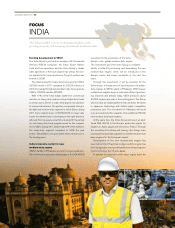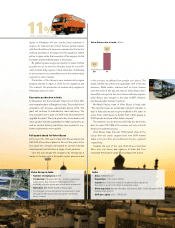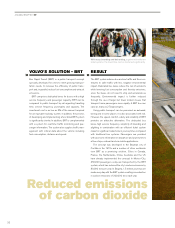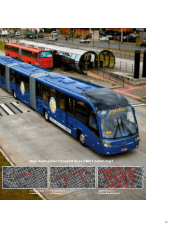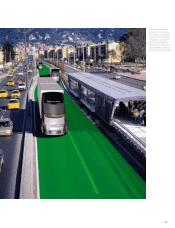Volvo 2011 Annual Report Download - page 31
Download and view the complete annual report
Please find page 31 of the 2011 Volvo annual report below. You can navigate through the pages in the report by either clicking on the pages listed below, or by using the keyword search tool below to find specific information within the annual report.
Volvo Group sales in India, SEK bn
00 11
6.0
0.3
India
• Area: 3,288,000 km2
• Population: 1,171 million (2010)
• Capital: New Delhi with 242,000 inhabitants (Estimate 2010.
New Delhi is a part of the Delhi metropolitan area)
• Other big cities: Mumbai (Bombay 13.8 million), Delhi (12.6), Bangalore (5.4),
Kolkata (Calcutta 5.1)
• GDP per capita: USD 1,176 (2010)
Volvo Group in India
• Number of employees: 3,919
• Production: Pithampur (Eicher – engines, gearboxes,
axles, trucks, bus chassis) and Bangalore (Volvo –
assembly of trucks, buses and construction equipment)
• Net sales: SEK 6,007 M, 2% of Group sales
• Third largest commercial vehicle manufacturer in India
through the VECV joint venture together with Eicher
Motor Limited
facility in Pithampur will also conduct final assembly of
engines for India and all of Volvo Group’s global markets
with Euro III and Euro IV emission requirements. Production
and final assembly of the engines for the Japanese market
will be in Ageo, while final assembly of the engines for the
European market will take place in Venissieux.
By gathering base engine production in India, it will be
possible for us to meet the Group’s need for cost-effi-
cient medium-duty engines in Asia, while also contributing
to an increase in our competitiveness in the medium-duty
segment in other markets.
Production of the Group’s new medium-duty engine
program started in Ageo in 2010 for the Japanese and
U.S. markets. The production of medium-duty engines in
Pithampur starts in 2012.
Excavator production in India
In November, the first excavator rolled out of Volvo CE’s
new excavator plant in Bangalore, India. The production of
excavators will increase substantially during 2012. The
plant will continue to manufacture road machinery. The
new excavator line is part of a SEK 144 M investment to
upgrade the plant. The local production of excavators will
mean greater machine availability for Indian customers, as
well as shorten delivery lead times and respond to cus-
tomer requirements more quickly.
Full speed ahead for Volvo Buses
On the eve of its 10th year in India, Volvo Buses announced
SEK 500 M investment plans for the next five years. In the
first phase the company will expand its current industrial
establishment and introduce a range of new products.
Over the last decade the company has emerged as a
leader in its class with a dominant market presence and
in the process re-defined how people see buses. The
Indian market has witnessed a paradigm shift in the bus
business. While earlier, coaches built on truck chassis
were the norm of the day, the entry of Volvo Buses intro-
duced the concept of a true-bus chassis with rear engines.
Volvo Buses also brought in the idea of BRT, efficient,
bus-based public transport systems.
Mr Akash Passey, head of Volvo Buses in India, said,
“The need for buses as sustainable transport solutions is
high in India and we aim to grow multifold in the years to
come. From 1,000 buses to 5,000. From 1,000 people to
5,000 people and be a billion dollar company.”
The ambition is to be there by 2015. By this time Volvo
aims to export 20–25% of its volumes not only in South
Asia but to markets beyond.
Volvo Buses today has over 70% market share in the
luxury inter-city coach segment and over 50% market
share in the low floor air-conditioned city bus segment
respectively.
Towards the end of the year, Volvo Buses launched
three new city buses and coaches in India and thus
increased the product range to encompass ten buses.
11%
of the total Indian market
2727



